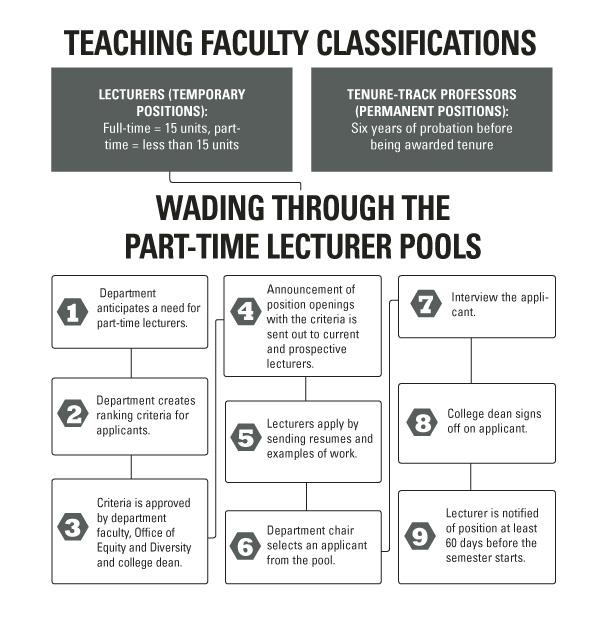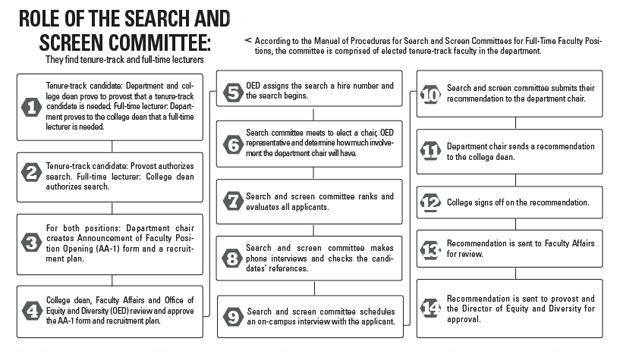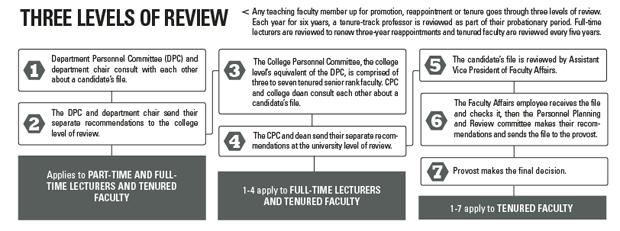As part of the Daily Sundial’s “Investigation Into Education” series, the process of hiring and screening for faculty was explored, including evaluations and background checks.
After someone has been offered a position, they must go through a background check and disclose any criminal convictions they may have.
Jill Smith, assistant vice president for Human Resources said that “very rarely” are people dishonest in their disclosure, adding that the results of the check are tethered to the area someone is applying for.
She said if someone is applying for a position in the sciences with a controlled substances conviction, there would be an issue. However, if an administrative employee has a DUI, it would not be taken as seriously because it has nothing to do with that job.
“Just because someone has a criminal record that doesn’t mean that they aren’t hired,” Smith said.
After hiring, student evaluations and class visits are made in order to gauge the effectiveness of lecturers and tenure-track professors.
Student evaluations are conducted every year in two of the faculty members’ classes.
The evaluations remain on file for at least five years and faculty are allowed to see them only after grades are assigned.
The department chair visits a lecturer’s class during their first semester, then once every three years or every 24 units. Visits for tenure-track faculty are made by the department chair and Department Personnel Committee (DPC) every year.
“This is a very serious process that everyone takes seriously. Your peers are going to evaluate you by a visit to your class, your syllabus and course materials and by student evaluations of teaching effectiveness,” said Dr. Penelope Jennings, assistant vice president of Faculty Affairs.
Before a candidate’s file is submitted to the next level of review, the candidate receives a copy of the recommendation. The candidate has 10 days to rebut the statements made or request a meeting to discuss them.
According to Unit 3 of the Collective Bargaining Agreement between the California Faculty Association and the CSU Board of Trustees, the faculty member being evaluated must have at least five days notice of a classroom visit.
“Students wish they can get in and catch (teaching faculty), but it’s a mutual process. This is not Target. The union is not going to allow that,” said CSUN CFA Chapter President Nate Thomas.
Thomas said that that kind of behavior is disrespectful to the faculty member and the student because when someone comes into a classroom unannounced it changes the dynamic of the class.
The DPC must also provide students an opportunity to consult with them about the performance of probationary and tenured faculty members under consideration for promotion, tenure or reappointment.

The Administrative Manual, which describes the policies and procedures for faculty, has two sections dealing with both types. Section 600 is for tenure-track and tenured faculty and Section 700 is for lecturers.
Lecturers are paid based on their degree and on both their professional and teaching experience. Even though part-time lecturers cannot be promoted to tenure, they can be paid more if their qualifications change.
After any lecturer has taught at CSUN for six consecutive years, they are eligible for three-year appointments, but they do not have to teach both semesters of each academic year. They are offered the same term of appointment every three years upon evaluation.
Lecturers with three-year appointments are the first to be called upon when a department goes to the pools but are required to reapply to the pools every year.

According to Section 600, the university standard degree requirement is a doctorate for associate professors, assistant professors and professors.
The AA-1 form has information about the position including qualifications, rank and salary. The recruitment plan is a list of agencies, publications and websites where the form will appear.
Judith Hennessey, interim dean of the College of Business and Economics, said campus visits matter because of CSUN’s diversity. One candidate was not hired after making a “snide comment” about how odd it was to see a family with kids playing under a table in the library.
During the campus visit, each candidate will take a tour of the university and meet with students. The candidate will then interview with the committee, dean, department chair and faculty.
“Background matters but doesn’t tell you how that person is going to act in our world with our students,” Hennessey said.
Tenure-track faculty must contribute to their field by publishing articles, books or journals. They must also serve on committees at the department, college or university level.
